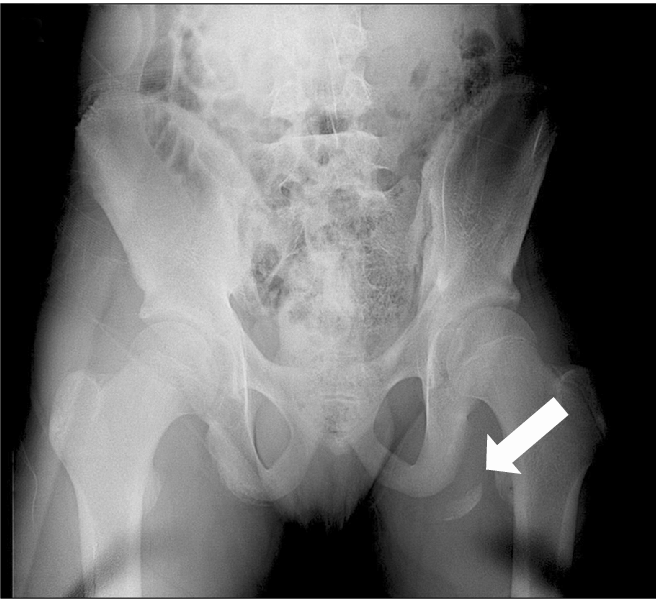Avulsion (Tearing Away) of Ischial Tuberosity
content of this page
1- Introduction
2- Anatomical Overview
3- Causes
4- Treatment
Introduction
Avulsion of the ischial tuberosity is a type of injury where the hamstring tendons, which attach to the ischial tuberosity (a bony prominence at the base of the pelvis), tear away from the bone. This injury typically occurs during activities that involve sudden, forceful contraction of the hamstring muscles, such as sprinting or jumping. Avulsion injuries can range from mild strains to complete tears of the tendon, leading to significant pain, swelling, and loss of function.

Anatomical Overview
The ischial tuberosity is located at the lower end of the posterior pelvis, and it serves as the attachment site for the hamstring muscles. When an avulsion injury occurs, it typically involves the tendons of the biceps femoris, semitendinosus, or semimembranosus muscles. These tendons attach to the ischial tuberosity and play a crucial role in the movement of the hip and knee joints. Anatomically, the avulsion injury is characterized by a separation or detachment of the tendon from the bone, which can be partial or complete. This type of injury is often caused by a sudden and forceful contraction of the hamstring muscles, such as during sprinting, kicking, or jumping, which can overload the tendons and lead to tearing. The avulsion of the ischial tuberosity can result in significant pain, swelling, and bruising in the buttock region. In severe cases, there may be a visible deformity or a palpable gap at the site of the injury. Imaging studies, such as X-rays or MRI scans, are typically used to diagnose the extent of the injury and determine the most appropriate treatment approach.

Causes
Sports Injuries: Participating in sports that require explosive movements, such as sprinting, jumping, or kicking, can put excessive strain on the hamstring tendons and increase the risk of avulsion injuries.
Overexertion: Fatigue or overexertion of the hamstring muscles, especially without adequate rest or conditioning, can weaken the tendons and make them more susceptible to injury.
Poor Biomechanics: Incorrect or inefficient movement patterns can place additional stress on the hamstring tendons, leading to injury over time.
Muscle Imbalance: Imbalances between the quadriceps and hamstring muscles, or between the different muscles of the hamstring group, can increase the risk of avulsion injuries.
Previous Injury: Individuals with a history of hamstring injuries or avulsions may be more prone to re-injury due to weakened or scarred tissues.
Age and Activity Level: Older individuals or those who are not accustomed to intense physical activity may be at higher risk of avulsion injuries, as the tendons may be less flexible and more prone to tearing.
Trauma: Direct trauma to the buttock region, such as a fall or impact, can also cause avulsion injuries of the ischial tuberosity.
Poor Warm-up: Failing to properly warm up before engaging in physical activity can increase the risk of muscle strains and avulsion injuries.
Treatment
Conservative Treatment: For mild to moderate injuries, conservative treatment may be sufficient. This typically involves rest, ice, compression, and elevation (RICE therapy) to reduce pain and swelling. Nonsteroidal anti-inflammatory drugs (NSAIDs) may also be recommended to help manage pain and inflammation.
Immobilization: In some cases, immobilization of the hip and knee joint may be necessary to allow the torn tendon to heal. This may involve the use of crutches or a brace to limit movement of the leg.
Physical Therapy: Once the acute pain and swelling have subsided, physical therapy exercises can help restore strength, flexibility, and function to the injured area. These exercises may include gentle stretching, strengthening, and mobility exercises tailored to the individual’s specific needs.
Surgical Treatment: For more severe injuries, especially those involving a complete tear or significant displacement of the tendon, surgery may be necessary to reattach the tendon to the bone. Surgery is typically followed by a period of immobilization and then a gradual rehabilitation program to restore function.
Platelet-Rich Plasma (PRP) Therapy: Some individuals may benefit from PRP therapy, which involves injecting a concentrated solution of platelets from the patient’s own blood into the injured area. This can help stimulate healing and reduce pain and inflammation.
Shockwave Therapy: Shockwave therapy uses high-energy sound waves to stimulate the healing process in the injured tendon. This treatment may be beneficial for some individuals with chronic avulsion injuries that have not responded to other treatments.
Activity Modification: Following treatment, it may be necessary to modify activities or sports that put excessive strain on the hamstring tendons to prevent re-injury.